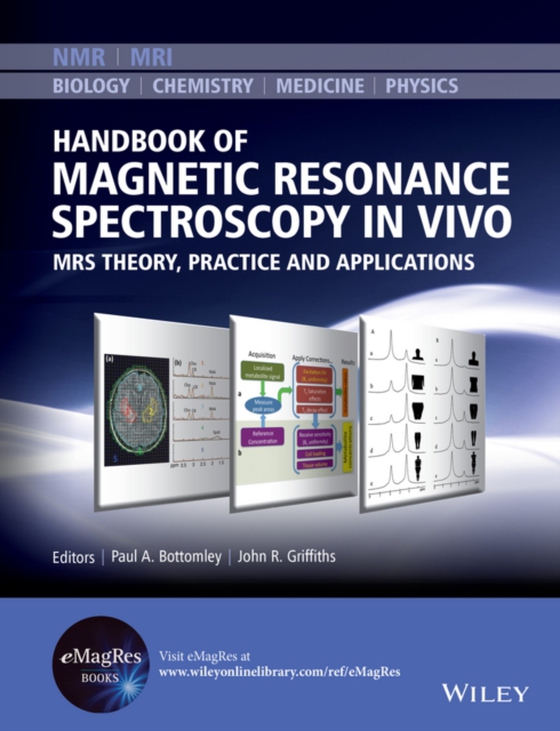
Handbook of Magnetic Resonance Spectroscopy In Vivo e-bog
2190,77 DKK
(inkl. moms 2738,46 DKK)
This handbook covers the entire field of magnetic resonance spectroscopy (MRS), a unique method that allows the non-invasive identification, quantification and spatial mapping of metabolites in living organisms including animal models and patients. Comprised of three parts: Methodology covers basic MRS theory, methodology for acquiring, quantifying spectra, and spatially localizing spectra, an...
E-bog
2190,77 DKK
Forlag
Wiley
Udgivet
19 oktober 2016
Genrer
MM
Sprog
English
Format
pdf
Beskyttelse
LCP
ISBN
9781118997697
This handbook covers the entire field of magnetic resonance spectroscopy (MRS), a unique method that allows the non-invasive identification, quantification and spatial mapping of metabolites in living organisms including animal models and patients. Comprised of three parts: Methodology covers basic MRS theory, methodology for acquiring, quantifying spectra, and spatially localizing spectra, and equipment essentials, as well as vital ancillary issues such as motion suppression and physiological monitoring. Applications focuses on MRS applications, both in animal models of disease and in human studies of normal physiology and disease, including cancer, neurological disease, cardiac and muscle metabolism, and obesity. Reference includes useful appendices and look up tables of relative MRS signal-to-noise ratios, typical tissue concentrations, structures of common metabolites, and useful formulae. About eMagRes Handbooks eMagRes (formerly the Encyclopedia of Magnetic Resonance) publishes a wide range of online articles on all aspects of magnetic resonance in physics, chemistry, biology and medicine. The existence of this large number of articles, written by experts in various fields, is enabling the publication of a series of eMagRes Handbooks on specific areas of NMR and MRI. The chapters of each of these handbooks will comprise a carefully chosen selection of eMagRes articles. In consultation with the eMagRes Editorial Board, the eMagRes Handbooks are coherently planned in advance by specially-selected Editors, and new articles are written to give appropriate complete coverage. The handbooks are intended to be of value and interest to research students, postdoctoral fellows and other researchers learning about the scientific area in question and undertaking relevant experiments, whether in academia or industry. Have the content of this handbook and the complete content of eMagRes at your fingertips!Visit the eMagRes Homepage
 Dansk
Dansk

